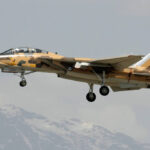Flying squirrels, often unseen due to their nocturnal habits, are fascinating creatures of the North American woodlands. These mammals, more accurately described as gliding squirrels, are known for their unique ability to travel between trees without touching the ground. A common question that arises when learning about these animals is: How Long Do Flying Squirrels Live? Understanding their lifespan not only satisfies our curiosity but also provides insights into their life cycle, survival challenges, and conservation needs.
Identifying North American Flying Squirrels: Northern vs. Southern
North America is home to two native species of flying squirrels: the northern flying squirrel (Glaucomys sabrinus) and the southern flying squirrel (Glaucomys volans). While both are masters of gliding and share a gray-brown coat, subtle differences help distinguish them. The northern flying squirrel boasts belly fur with a gray base, whereas the southern flying squirrel has an all-white belly. Size is another key differentiator, with southern flying squirrels being smaller, ranging from 8 to 10 inches in length. Northern flying squirrels are slightly larger, measuring between 10 and 12 inches long.
Gliding Experts: More Than Just Leaping
Despite their name, flying squirrels don’t actually fly in the same way birds or bats do. They are gliders, equipped with a remarkable membrane called a patagium that stretches between their front and back legs. This membrane acts like a wing, allowing them to glide through the air. When a flying squirrel decides to move to another tree, it launches itself from a high branch, extending its limbs to deploy the gliding membrane. By making subtle adjustments with its legs for steering and using its tail as a brake, a flying squirrel can effortlessly glide distances exceeding 150 feet in a single leap. This gliding ability is not just for travel; it’s a crucial survival tool, helping them evade predators.
Habitat and Range: Where Flying Squirrels Reside
Southern flying squirrels enjoy a widespread distribution throughout the eastern United States, from Maine down to Florida and westward to Texas and Minnesota. Northern flying squirrels, on the other hand, have a more fragmented range, primarily inhabiting the Northeast, the West Coast, and extending into Idaho and Montana. Both species are adaptable to different forest types, thriving in deciduous and coniferous forests and woodlands. They seek shelter in natural cavities such as tree snags and woodpecker holes, as well as utilizing nest boxes and abandoned nests of birds or other squirrels. Interestingly, to conserve warmth during colder months, multiple flying squirrels may nest together in a communal setting.
Dietary Habits: What Do Flying Squirrels Eat?
Flying squirrels are omnivorous, with a diverse diet that reflects their adaptability and resourcefulness. Their food sources include a variety of items like seeds, nuts, fungi, fruits, and insects. Southern flying squirrels are recognized for their more carnivorous tendencies compared to their northern counterparts. They often supplement their diet with eggs, small birds, and even carrion, demonstrating their opportunistic feeding habits.
The Lifespan Question: How Long Do They Live?
Now, addressing the core question: how long do flying squirrels live? The lifespan of flying squirrels varies significantly between wild and captive environments. In the wild, flying squirrels typically live for about 5 to 6 years. However, in the protected environment of captivity, where they are shielded from predators and have consistent access to food and veterinary care, they can live considerably longer, reaching up to 10 years. This stark difference highlights the numerous challenges wild flying squirrels face, impacting their survival and longevity.
Predators and Wild Survival
Flying squirrels, despite their gliding prowess, are preyed upon by a variety of predators. Owls, hawks, tree snakes, and climbing mammals are among their common threats. Their gliding ability is a key defense mechanism, allowing them to quickly escape and maneuver away from danger. Upon landing on a tree trunk after a glide, they swiftly move to the opposite side, further evading potential pursuers. Despite these adaptations, predation remains a significant factor limiting their lifespan in the wild.
Conservation Status: Challenges Faced by Flying Squirrels
While flying squirrels are generally considered common rodents across many parts of their range, certain subspecies of the northern flying squirrel are facing conservation concerns. Two subspecies are federally listed as endangered due to habitat loss. This highlights the impact of environmental changes and human activities on even seemingly common species. Habitat loss reduces available resources, increases vulnerability to predators, and can fragment populations, ultimately affecting their long-term survival.
Fun Fact: Inspired Gliding Technology
The remarkable gliding ability of flying squirrels has long captured human imagination and inspired innovation. Base jumpers and skydivers have developed specialized wingsuits that mimic the flying squirrel’s gliding membrane. These suits enable them to slow their descent and maneuver through the air, demonstrating the practical applications drawn from observing nature’s designs.
In conclusion, while flying squirrels can live up to 10 years in captivity, their lifespan in the wild is typically shorter, around 5 to 6 years, due to predation and environmental challenges. These nocturnal gliders play a vital role in their forest ecosystems. Understanding their lifespan and the factors influencing it underscores the importance of habitat conservation and broader efforts to protect these fascinating creatures and their natural environments.
Sources
Animal Diversity Web, University of Michigan Museum of Zoology
Chattanooga Arboretum & Nature Center
Connecticut Department of Energy & Environmental Protection
NatureServe Explorer
U.S. Fish & Wildlife Service
Wildscreen Arkive

